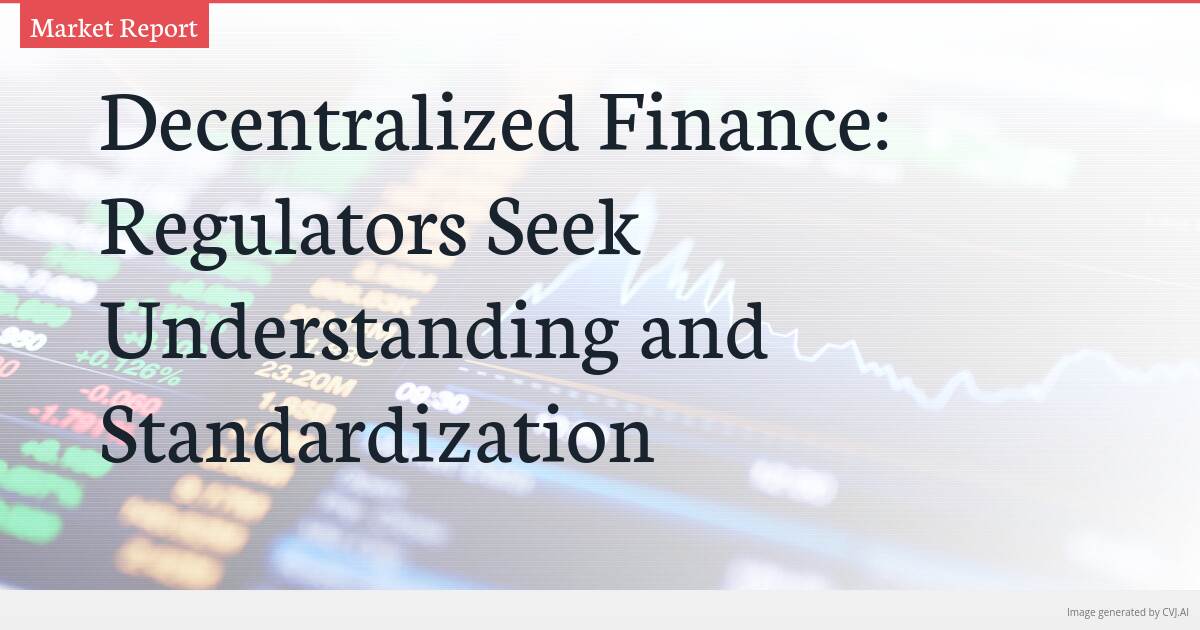This summary text is fully AI-generated and may therefore contain errors or be incomplete.
Understanding Decentralized Finance (DeFi) and Regulatory Challenges
Decentralized Finance (DeFi) has been gaining traction in the financial world, offering a new approach to traditional financial services by leveraging blockchain technology. However, this innovative space has raised concerns among regulatory bodies due to its potential for illicit activities and the complex nature of its technology.
Defining DeFi
DeFi encompasses a range of financial services and applications built on blockchain technology, aiming to replicate traditional financial systems without the need for intermediaries like banks. The U.S. Commodity Futures Trading Commission (CFTC) defines DeFi as highly automated financial networks that operate without a single point of failure, relying on decentralized governance and information sources.
Regulatory Challenges
The CFTC’s Technology Advisory Committee (TAC) has highlighted the need for policymakers to enhance their understanding of DeFi, emphasizing the importance of identifying the unknowns in this space. While regulatory agencies such as the Securities and Exchange Commission (SEC) and the Financial Crimes Enforcement Network (FinCEN) have shown interest in overseeing aspects of DeFi, there are differing opinions within the regulatory bodies regarding the approach to regulating this dynamic financial landscape.
Risks and Benefits
The benefits and risks associated with DeFi depend on the specific design and features of individual systems. While DeFi systems operate on a spectrum between centralization and decentralization, they have been flagged for their susceptibility to illicit finance risks, cyber hacks, and theft. The potential for anonymity and the ability to bypass know your customer (KYC) and know your business (KYB) controls have raised concerns about the misuse of DeFi services by bad actors.
Industry Dialogue
The release of the CFTC’s report on DeFi is seen as a potential starting point for dialogue between regulators and the industry. However, there are dissenting voices within the CFTC’s TAC, expressing concerns about the limitations and complexities of DeFi’s hyped potential, particularly in relation to economic incentives and the resemblance to the existing financial system.
Technology and Transparency
While DeFi technology offers enhanced security compared to centralized infrastructures, there are challenges related to the transparency of blockchain networks. The raw data available on blockchain networks requires significant technological competency and capacity to collect, manipulate, and analyze, posing obstacles to scalable adoption of blockchain-based financial technology.
Conclusion
As DeFi continues to evolve, it presents both opportunities and challenges for the financial industry and regulatory authorities. The need for a nuanced understanding of DeFi’s technology and its potential impact on financial stability and security remains a priority for policymakers and industry stakeholders.
📎 Read the original article on pymnts.com


